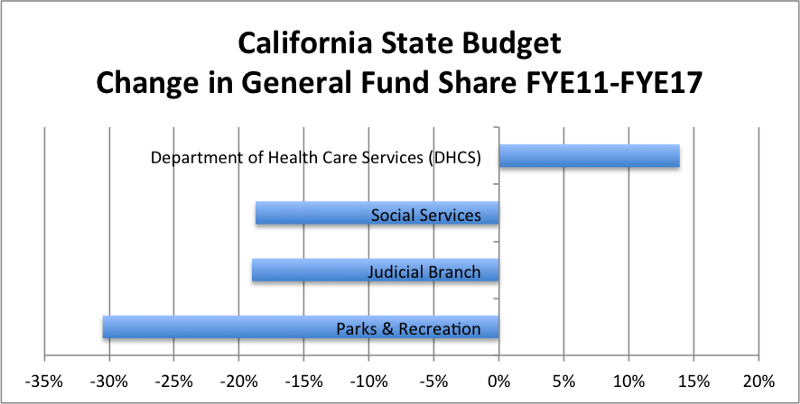California dodged a budgetary bullet last week when Congress elected not to change Medicaid reimbursement rules. With 14 million people covered by Medi-Cal, which is California’s version of Medicaid, the consequences for the state budget of having to pick up more of that cost would’ve been enormous. But that’s just one battle.
Medi-Cal is a single-payer system that pays for healthcare costs incurred by Californians with limited financial resources. Not a provider itself, Medi-Cal pays others to provide services. Think of it as a voucher system. The revenues are captured by hospitals, doctors, nurses and pharmaceutical companies, some of the state’s biggest commercial and political interests.
According to the Governor’s Budget, Medi-Cal is expected to cost more than $100 billion in the next fiscal year, double the spending of seven years ago. Yet where is the evidence of improvement in health from all that spending? Even emergency room visits are up, not down. Because the federal government reimburses only a portion of Medi-Cal spending, other services take the hit:

Is it any wonder that hospitals, doctors, nurses and pharmaceutical companies are so politically active in Sacramento? You too would be active if you could profit from $100 billion per year — especially if you’re not accountable for results.
In 1960 Dwight Eisenhower warned about a military-industrial complex that frightens citizens in order to score unnecessary military contracts. But that complex is half the size of today’s healthcare-industrial complex, which this year will collect $1.3 trillion from governments and score excessive revenues at the expense of citizens. Health providers talk a great game about improving health but in the spirit of Walter Mondale famous question during the 1984 presidential race, “where’s the beef?” We fall well short of other developed countries even though our governments spend much more.
Like military contractors, healthcare providers appeal to fear whenever legislators seek to improve the productivity of government spending. But one way or another, California’s elected officials need to get more bang for those bucks. If we are not getting a sufficient return on healthcare spending, we should use that money elsewhere. Legislators should know what return we’re getting and should incentivize or require providers to improve health if they want to earn public money. If not, count on more profiteering, higher taxes, and more crowding out of other public services.

